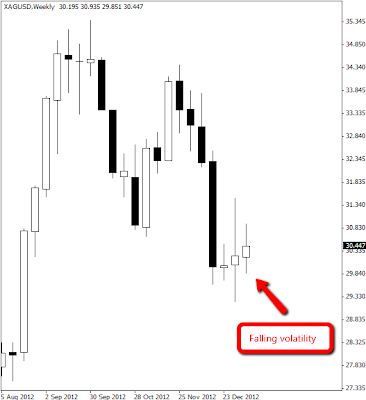I put in three trades this week, won one and lost two so I'm down for the week.
TRADES IN REVIEW
AUDUSD
I saw an entry signal using my Hermes system on Monday, and used a 1.25:1 reward:risk ratio. Banked some profit on Tuesday as the AUDUSD moved north.
EURUSD
It's a similar story with the EURUSD. An entry signal appeared on Monday, and I put in a pending long and a pending short on the break of Monday's high and low. I set my reward:risk to 1.25:1.
Both the long and short were triggered, but in each instance price reversed and hit my stop loss.
I don't feel much at all about these losses, to be honest. If you thoroughly backtest your trading systems, you will know what to expect.
SYSTEM DEVELOPMENT
I completed my backtest and optimisation on pinbars using the weekly timeframe. I tested 11 pairs from 2001 to mid-2012 and gathered a sample size of 352 trades. It's not alot. My overall profit factor was 1.51 using a reward:risk of 0.25:1. I'll post more details in a future entry but it shouldn't take anyone long to backtest pinbars on the weekly timeframe if they don't want to wait. I'm coughing my lungs out and I want to rest for the Monday open!
UPCOMING SIGNALS
I saw two interesting entry signals on the weekly chart using my Daikoku system. The signals are on the USDCHF and GBPUSD pairs.
I didn't see anything interesting on the daily charts.
TO COME...
I'll post more details on my weekly pinbar system, plus some thoughts in calculating the profit factor for a system across multiple pairs. Tip: your true profit factor is NOT the average profit factor across multiple pairs.













